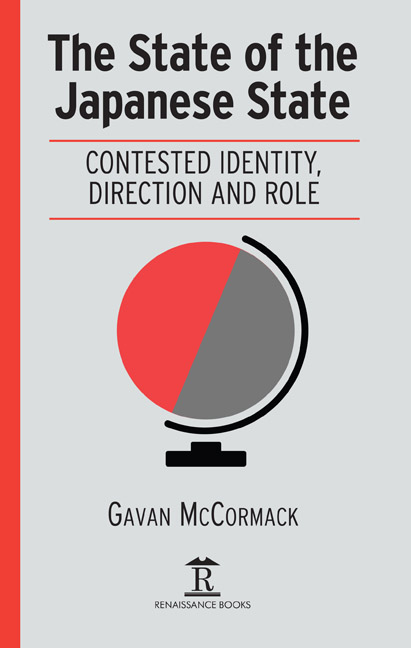Book contents
- Frontmatter
- Contents
- Preface
- Chapter 1 The Improbable Package
- Chapter 2 The Client State
- Chapter 3 The Client State’s Client State
- Chapter 4 Okinawa – State Violence and Civic Resistance
- Chapter 5 Around the East [China] Sea
- Chapter 6 The Construction State
- Chapter 7 The Constitutional State
- Chapter 8 The Rampant State
- Chapter 9 Conclusion
- Afterword
- Index
Chapter 3 - The Client State’s Client State
Published online by Cambridge University Press: 04 May 2022
- Frontmatter
- Contents
- Preface
- Chapter 1 The Improbable Package
- Chapter 2 The Client State
- Chapter 3 The Client State’s Client State
- Chapter 4 Okinawa – State Violence and Civic Resistance
- Chapter 5 Around the East [China] Sea
- Chapter 6 The Construction State
- Chapter 7 The Constitutional State
- Chapter 8 The Rampant State
- Chapter 9 Conclusion
- Afterword
- Index
Summary
JAPAN IN THE EAST [CHINA] SEA
JAPAN'S SOUTHWESTERN, FRONTIER islands, Okinawa Island itself at their heart, have throughout the modern era concentrated the pressures of the nation state to such a degree that they may be seen as a kind of Japanese client state, and since their primary raison d’être since 1945 has been service of the US military, their clientilist status is dual, to the US and to Japan. Okinawa may be seen as a uniquely colonial territory, subject to dual denial of sovereignty.
Okinawa Island is the largest of the islands that stretch from Japan's Kyushu for about 1100 kilometers through the East [China] Sea to (and even slightly beyond) Taiwan. For roughly half a millennium (1372–1879), the major islands of Okinawa and Sakishima groups constituted the Ryukyu Kingdom, self-governed and part of the China-centered “tribute system.” Together with the Osumi and Amami groups, the Okinawa islands divide the East [China] Sea from the Pacific Ocean. “Tribute” missions plied the routes between Okinawa (then the Ryukyu kingdom) and the China coast and Western Pacific to Siam and Vietnam. Ritual submission seems to have been unmarked by violence or protest. Farthest are the Sakishima (literally “farthest”) Island groups, comprising Miyako and Yaeyama. Yaeyama in turn includes three main islands, Ishigaki, Iriomote and Yonaguni, together with the uninhabited group of islets known in Japan as Senkaku and in China as Diaoyu, which for administrative purposes form part of the Yaeyamas although they lie on the opposite side of the Ryukyu Trench (a Himalayan range in reverse, with depths up to 10,000 meters).
The islands of the Ryukyu chain were the last sector of today's Japanese territory to be incorporated in the modern Japanese state, a process accompanied, uniquely, by force: invasion in 1609 leading to partial incorporation, but with sufficient residual sovereignty to be able to negotiate 19th century treaties opening relations with the US (1854), France (1855), and the Netherlands (1859), followed by full incorporation as an act of “punishment” (shobun) in 1879, a disposition to which the ruling elite submitted only under torture, Ryukyu sovereignty forcibly extinguished. China protested, but those two interventions, taking place at moments of maximum Chinese weakness and disorder, during the early 17th century decline of the Ming dynasty in the former case and the late 19th century decline of the Qing dynasty in the latter, were decisive.
- Type
- Chapter
- Information
- The State of the Japanese StateContested Identity, Direction and Role, pp. 66 - 100Publisher: Amsterdam University PressPrint publication year: 2018



